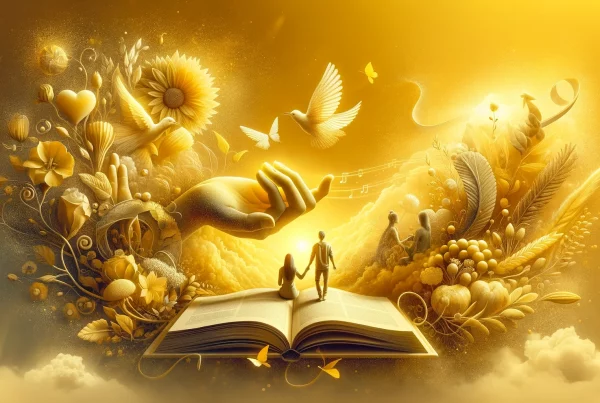Click to listen to the Podcast Episode.
Hi everybody.
Welcome once again to this podcast on how to heal your relationship.
My name is Ayesha Walker. I’m a relationship coach and I work with couples and individuals teaching them skills, tips, tools and techniques on how to navigate some of the common challenges of intimate relationships.
The Importance Of Sharing What You Feel
Now, we’ve been talking recently about the importance of being able to share what you feel.
Why is that important when you are wanting to share something with your partner that’s of great importance to you?
Well, the ability to share your feelings creates connection and also understanding between both of you.
Because emotions are a universal language, we all have them and therefore we all have the ability to empathise with somebody who has or is going through a feeling that we ourselves have perhaps experienced.
So being able to connect to what it is that you are feeling and also to share it, is a very key skill in relationship communication. Now I say it’s not just about sharing, it is first about connecting because sharing is one skill.
Get Connected To Feelings
But actually before you can share, you first need to be actually connected to what it is that you are feeling. Otherwise, how on earth are you going to be able to share it? Well, the truth is, some people are naturally better at this than others. Some people are just naturally more equipped to really be connected and in touch with what they are feeling.
For many others, this is not an automatic skill. Some say women are better at it than men.
I think in this day and age that’s certainly something that is always debatable.
But there is some evidence at the biological level that women have a larger, uh, limbic centre to their brain and therefore may be slightly better at expressing feelings and being connected to feelings. But gender differences isn’t something that we’re really going to go into in today’s episode.
I really want to focus on feelings themselves and the reality that for whatever reason, some people are just better at expressing them and being connected to them than others.
So for those souls who aren’t brilliant at being connected to or expressing what they feel, I’d like to offer something today that I’m hoping will help you be better able to express, or connect to whatever it is that you are feeling, and it is something that I call the feelings inventory.
Feelings Inventory
So this is a chart and it identifies many of our major feelings, not all of them. It would pretty much be impossible to cover every single feeling that a man or a woman could possibly have, but it does cover some of the key ones. Now, if any of you guys are interested in having a copy of this inventory, you can download these here.
But today we’re just going to go over the chart and I’m hoping as I speak, I can give you a little bit of a visual of what it involves. So maybe the first thing to say is that it is split into two areas.
This feelings inventory is split into two sections. So those two sections are a list of feelings that you might have when your needs are satisfied, when everything that you need to live a fulfilled life, a happy life, a peaceful life, whatever it is, are satisfied.
So those might be things like feelings of affection, feelings of excitement, feelings of peacefulness, feelings of inspiration, feelings of hope, that sort of thing. Uh, we often might be thinking of these in the arena of positive feelings, but in my book, I don’t believe there’s any such thing as a negative feeling or feelings are good. They all. Serve a purpose.
But when they are on the flip side of those that I’ve just described, I would say they come under the heading of feelings when your needs are not satisfied. So there’s nothing negative about them.
They just arise when you are in a state of your needs. Those things that are important to you for quality of life are not being satisfied, and that may leave you feeling things such as afraid or disconnected, sad, embarrassed, vulnerable, angry, annoyed, etc. etc..
So one of the benefits of having an inventory, a list like this of feelings when you are really struggling to connect what it is that you might be feeling is you can take a quick look through this list and hopefully it’s going to spark you to connecting, even if it’s not exactly what you’re feeling, that it’s something similar.
And that way you can truly connect to what it is that you are feeling. It’s also worth pointing out when we’re talking about feelings is this can cover physical feelings as well as emotional states.
So of course you might be feeling tired. You might be feeling cold, you might be feeling exhausted, you might be feeling uncomfortable.
Whatever it is that you are feeling, though, being connected to it and being able to share it is what is key. It allows the other person really to step into your world. When you are sharing what you are feeling, it allows them to have empathy for why you are where you are.
Although, as we were talking about last week, if you start attributing your feeling to their behaviour, they will lose that empathy.
So just to reflect on what we were sharing around that last week, when you start to say things like, you make me really uncomfortable, you make me really angry, you depress me every time you do such and such.
Owning Your Feelings
When you start attributing your feelings to your partner and not sharing them from a place of ownership, then you will not get that empathy that you are looking for.
However, when you share them from a place of ownership, I feel really exhausted. I feel very sad. I’m feeling very vulnerable right now. I’m feeling unhappy. I’m feeling very calm. I’m feeling really happy.
When you are sharing from a place of owning that feeling as something that you yourself have created, and then you are much more likely to be met with an empathic response.
Now I’m sharing with you how having an inventory can be very helpful. If you’re somebody that really struggles to connect to or share what you’re feeling.
But if even this is something of a struggle for you, and you’re still very much challenged by connecting to what it is that you are feeling, there is one other simple technique that you can do.
So I spoke a moment ago about needs right when you are needing something. So let’s take that very simple example of a physical feeling. Let’s say you are needing warmth. Y ou can probably work it backwards to work out then. Therefore, what it is that you might be feeling is a feeling of cold.
Okay, so that’s a very obvious example. Most people who are cold would know that they’re feeling cold. It’s much easier when we’re talking about physical sensations, but a little bit less easy when we are talking about emotional ones. But the same rule works if you are needing company.
Let’s say it could be that you are feeling lonely. If you are needing excitement and variety, it could be that you are feeling stuck or. Uninspired. If you are craving tranquillity or peace, it wouldn’t be too difficult to work it back that you might be feeling. Overwhelmed or. Stressed or anxious.
So if you can identify what it is that you are wanting, what it is that you are needing, it’s not too much of a step to work it back to. Certainly the general area of what you’re feeling might be.
And of course, if you can do this with yourself. You can do it with your partner, because that is the next section of communication that we want to be able to talk about, not only being able to connect to and share what it is that you’re feeling, but to be able to intuit and work out what your partner is feeling.
And by the same rule, if you can work out what it is they are needing, or if you can get them to express what it is they are needing, you can probably work out what they are feeling.
And here’s the key thing it will make it much easier for you to understand and to empathise rather than to conflict. And that is going to be the subject of our podcast next week, so I look forward to speaking in even more depth with you on the wonderful subject of feelings, and also needs.
In the meantime, have an amazing week! Get in touch with me, get hold of that PDF for yourself so you can start playing around and connecting to what it is that’s going on in your own world, in the world of feelings.
And until we get a chance to speak again, have a fantastic seven days. Take care.



